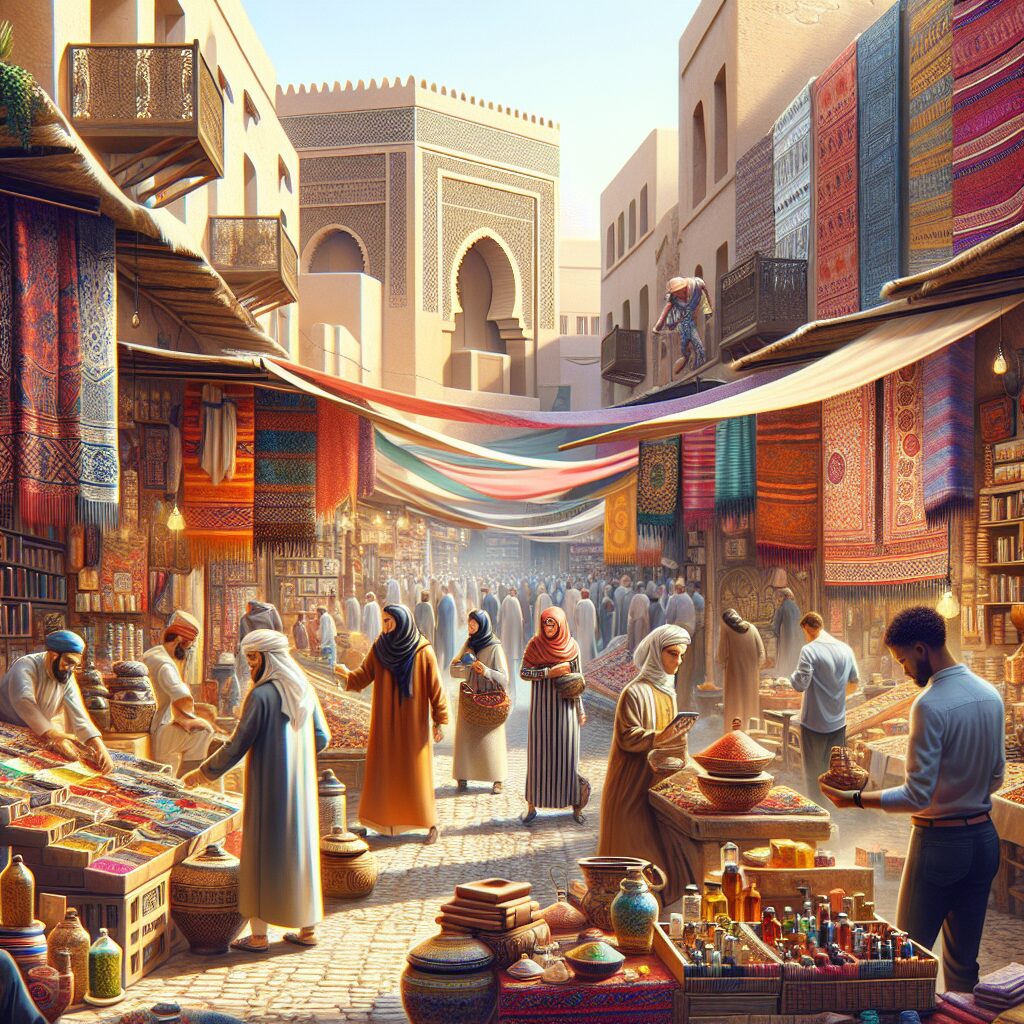Caribbean Island hopping adventures offer a thrilling and immersive way to explore the stunning beauty and rich cultural diversity of this tropical paradise. With over 7,000 individual islands scattered across the Caribbean Sea, each with its own distinct charm and allure, the options for unforgettable adventures are endless. From the vibrant rhythms of Jamaica to the crystal-clear waters of the Bahamas, there is something for everyone to discover and enjoy.
Perhaps one of the most unique features of Caribbean island hopping adventures is the opportunity to experience the diverse cultures and cuisines that exist from one island to the next. Each island has its own distinct character and history, shaped by influences from Africa, Europe, and indigenous tribes. From the vibrant street markets of St. Lucia to the colonial architecture of Puerto Rico, visitors can immerse themselves in the rich tapestry of Caribbean life. Additionally, the warm hospitality and welcoming nature of the local people make island hopping an unforgettable cultural experience.
In the upcoming sections of this article, we will delve deeper into the key takeaways from Caribbean island hopping adventures. We will discuss the top destinations to visit, the best ways to plan your itinerary, and the must-try activities and attractions in each location. Whether you are an avid sailor looking to traverse the sparkling seas or a beach lover seeking the perfect spot to relax and unwind, our guide will provide you with the essential information you need to make the most of your Caribbean island hopping adventure. So sit back, relax, and let us take you on a virtual journey through this tropical paradise.
Key Takeaways
1. The Caribbean offers a diverse array of islands, each with its unique culture, history, and natural beauty. From lush rainforests in Dominica to pristine beaches in Barbados, travelers can indulge in various island-hopping adventures.
2. Island-hopping in the Caribbean allows travelers to experience a mix of vibrant cities, serene landscapes, and outdoor activities. Enjoy the bustling energy of Aruba’s capital, Oranjestad, or explore the crystal-clear waters surrounding St. Lucia while snorkeling or diving.
3. With convenient transportation options like ferries and regional airlines, exploring multiple Caribbean islands has never been easier. Embrace the flexibility of hopping from one paradise to another, discovering hidden gems along the way.
4. Caribbean cuisine showcases the region’s rich cultural heritage. Embark on a culinary journey as you hop from island to island, savoring jerk chicken in Jamaica, savory doubles in Trinidad and Tobago, or indulging in conch fritters in the Bahamas.
5. Island-hopping adventures in the Caribbean offer a perfect combination of relaxation and exploration. Whether you prefer lounging on pristine beaches or embarking on thrilling adventures like hiking volcanic peaks, the Caribbean islands provide an unforgettable experience for all types of travelers.
What are the Best Caribbean Island Hopping Adventures for an Unforgettable Experience?
1. Introduction
Caribbean Island Hopping Adventures offer a unique opportunity to explore the breathtaking beauty and cultural diversity of the Caribbean islands. From white sandy beaches and crystal-clear turquoise waters to vibrant local cultures and historical sites, these adventures promise unforgettable experiences. Let us dive deep into the enticing Caribbean islands where adventure awaits.
2. Choosing Your Starting Point
When embarking on Caribbean Island Hopping Adventures, it is essential to decide on your starting point. Popular starting places include Puerto Rico, St. Thomas, Barbados, or St. Martin. Each of these islands boasts excellent connectivity, allowing you to easily explore nearby islands in the vicinity.
3. Planning Your Itinerary
Creating a well-crafted itinerary is crucial to make the most out of your Caribbean Island Hopping Adventures. Consider the duration of your trip, your interests, and the islands you wish to visit. Keep in mind that each island offers unique attractions, such as diving hotspots, national parks, historic landmarks, and cultural festivals. Plan your days accordingly to balance relaxation and exploration.
4. Island Hopping Modes of Transportation
When hopping between Caribbean islands, you have various transportation options. Ferries and chartered boats are popular choices for island-to-island transfers, giving you the opportunity to enjoy the scenic journey while experiencing the true essence of the Caribbean. Some islands also offer domestic flights, which provide convenience for longer distances.
5. Must-Visit Islands on Your Adventures
Discover the enchanting gems of the Caribbean during your island hopping adventures. Here are some must-visit islands to include in your itinerary:
- Aruba: Famous for its stunning beaches, vibrant nightlife, and water sports activities, Aruba offers a perfect blend of relaxation and excitement.
- St. Lucia: Known for its majestic Pitons, lush rainforests, and geothermal wonders, St. Lucia offers a paradise for nature enthusiasts.
- Antigua and Barbuda: Explore Antigua’s 365 pristine beaches and Barbuda’s untouched beauty, abundant with bird sanctuaries and pink sandy shores.
- St. Kitts and Nevis: Immerse yourself in history and culture by visiting the UNESCO-listed Brimstone Hill Fortress and enjoying the serene beaches.
- Curacao: This Dutch Caribbean island enchants visitors with its vibrant architecture, stunning diving spots, and the iconic Willemstad.
6. Budget-Friendly Tips for Caribbean Island Hopping Adventures
Traveling on a budget doesn’t mean compromising on the quality of your Caribbean Island Hopping Adventures. Follow these tips to make your journey affordable:
- Book in advance: Look for early bird deals and discounted packages to save money on accommodations and transportation.
- Consider local cuisine: Opt for local street food and less touristy restaurants to experience authentic flavors without breaking the bank.
- Stay in guesthouses or hostels: Save on accommodations by choosing budget-friendly options like guesthouses or hostels instead of luxury resorts.
- Join group tours: Participating in group tours can help reduce expenses, as costs are shared among participants.
- Utilize local transportation: Instead of relying solely on taxis, consider using public buses or renting bicycles to get around the islands economically.
Frequently Asked Questions
1. What is Caribbean Island Hopping?
Caribbean Island Hopping is a popular travel activity that involves visiting multiple islands within the Caribbean Sea during a single trip. It allows travelers to explore and experience the unique cultures, stunning beaches, and diverse landscapes of different Caribbean islands.
2. How many islands are there in the Caribbean?
The Caribbean consists of over 7000 islands, islets, and cays, with only a few hundred of them inhabited. However, the exact number may vary depending on the criteria used to define an island, as some smaller formations may not be included.
3. How do I plan a Caribbean Island Hopping adventure?
To plan a Caribbean Island Hopping adventure, start by researching the various islands and their attractions. Consider factors such as your interests, budget, and travel time. Then, create an itinerary that includes the islands you want to visit and the activities you wish to engage in. Make sure to account for transportation between the islands.
4. Is Caribbean Island Hopping suitable for families?
Absolutely! Caribbean Island Hopping offers something for everyone, including families. Many islands have family-friendly resorts, beautiful beaches with calm waters, and activities suitable for all ages, such as snorkeling, boat trips, and wildlife encounters.
5. What is the best time of year for Caribbean Island Hopping?
The Caribbean enjoys warm weather year-round, but the best time for Island Hopping is during the dry season, which typically spans from December to April. This period offers pleasant temperatures, lower humidity, and less chance of encountering hurricanes.
6. How can I travel between Caribbean islands?
Traveling between Caribbean islands can be done by various means, including by air, boat, or ferry. Many islands have airports with regular flights, while others can be reached by scheduled ferries or private charters. Some cruise itineraries also include multiple Caribbean islands.
7. Is it necessary to know multiple languages when Island Hopping in the Caribbean?
English is widely spoken throughout the Caribbean due to the British and American influences in the region. However, knowing a few basic phrases in the local languages, such as Spanish or French, can enhance your experience and communication with the locals.
8. What are the must-visit Caribbean islands for Island Hopping?
The must-visit Caribbean islands for Island Hopping depend on personal preferences. However, popular choices include the Bahamas, Jamaica, Barbados, St. Lucia, Aruba, and the British Virgin Islands. Each island offers unique attractions, natural beauty, and cultural experiences.
9. Can I Island Hop on a budget?
Absolutely! Caribbean Island Hopping can be done on a budget. Consider opting for inexpensive accommodations, using public transportation, and exploring local dining options. Additionally, visiting less crowded or off-the-beaten-path islands can often be more budget-friendly.
10. What are some popular activities to do while Island Hopping in the Caribbean?
While Island Hopping in the Caribbean, popular activities include snorkeling or diving in vibrant coral reefs, exploring lush rainforests, enjoying water sports like paddleboarding and kayaking, visiting historic landmarks and museums, and indulging in local cuisine.
Final Thoughts
Caribbean Island Hopping Adventures offer an unmatched opportunity to explore the enchanting beauty and rich cultural heritage of the Caribbean islands. Whether you are seeking relaxation on pristine beaches, thrilling water sports, vibrant nightlife, or immersive cultural experiences, the islands have something to offer for every type of traveler.
Embarking on a Caribbean Island Hopping adventure allows you to customize your itinerary and discover hidden gems that might not be accessible on a single island stay. Immerse yourself in the diverse landscapes, crystal-clear waters, and warm hospitality as you hop from one island to another, creating memories that will last a lifetime. So pack your bags, set sail, and get ready to embark on an unforgettable Caribbean Island Hopping Adventure!











